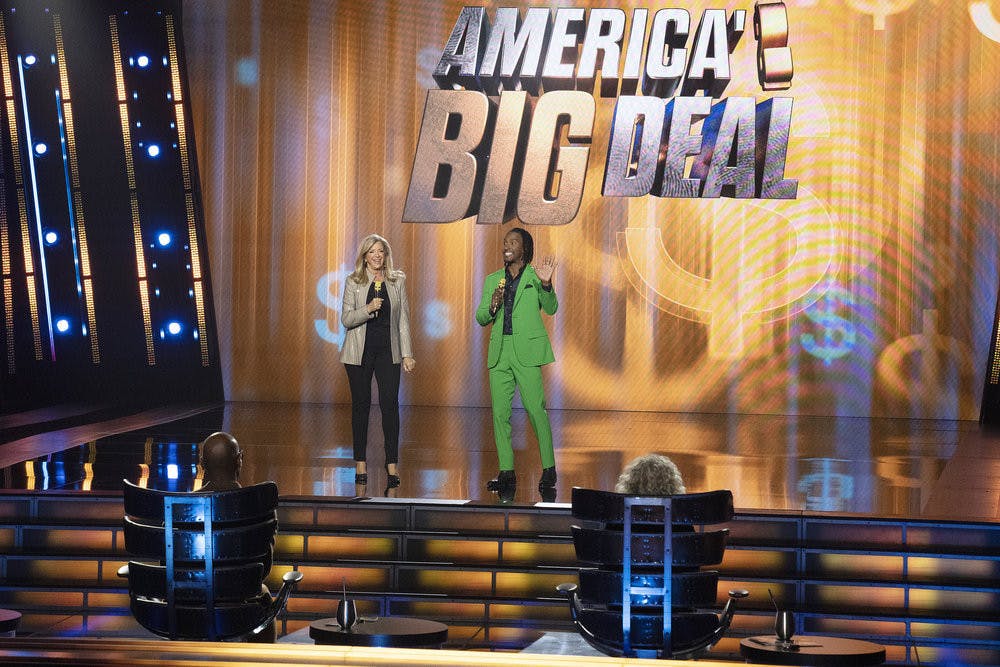In case you were looking for an hour-long advertisement, “America’s Big Deal” premiered on USA Network Oct. 14. As the first “shoppable” competition show, “Big Deal” gives four entrepreneurs the chance to pitch their product to the consumer watching at home every Thursday night. The winner — the person whose product is bought the most over the hour — gets to make a deal with one of three business executives on the show.
There’s a lot to find depressing about “Big Deal,” but let’s start with the host, Joy Mangano. Mangano posits herself as living the American dream. Inventor of the “Miracle Mop,” a self-wringing mop head, she saved herself from a dreary life as a stay-at-home mom with her entrepreneurial instincts. As she mentions in the first two minutes of “Big Deal,” the 2015 movie “Joy” starring Jennifer Lawrence is based on Mangano’s success.
But if there’s anything Mangano loves more than her own story, it’s products. Products! Products! Products!
“I love to make a great product,” she proclaims in her auction-like, Home Shopping Network tone she has cultivated over her years working for the channel, “but I love to see a great product, too.”
And products are aplenty on “Big Deal.” One of the first four contestants, David Britt, invented the Spiider Griip, a grip for your cell phone. “Our phones are one of the most important things we own. We have to do everything we can to protect them. Let’s grip the freedom!”
Britt, who claims to have written over 3,000 songs and wrestles in his spare time, tears up when talking about how much the experience of being on the “Big Deal” has meant to him.
Throughout the show, the words “open camera, scan code, shop now” flash on the bottom of the screen next to a QR code. This takes you to the shopping portal where the watcher, in real-time, can buy the products advertised.
Mangano, representing Home Shopping Network/Quality Value Convenience network, is one of those professionals. Two others represent Macy’s and Lowe’s. Advertisements for the department stores eat up a large chunk of the show, and those segments do not even count as real ad breaks. You get to hear how Macy’s is America’s store, how HSN has revolutionized shopping. The CEO of Lowe’s even makes the extraordinary claim that the home-improvement store has billions of customers.
There is little more driving “Big Deal” than USA Network’s belief in American consumers. The “Big Deal” is an hour-long ad for various things: the products being sold, the people selling them, Joy Mangano’s personal brand, Macy’s, Lowe’s, HSN. No one can speak without pitching themselves. Between the pitches from the entrepreneurs, the hosts telling their personal stories, the ads for the major retailers and the actual ad breaks for the show, there are about ten minutes of actual footage remaining. And, like any good competition, those ten minutes are eaten up by the suspense of learning who, exactly, gets to make America’s Big Deal.
In the first episode, winner Sherrill Mosee’s MinkeeBlue purses accumulated over $30,000 in revenue over the hour. HSN and Macy’s battled over offering the creator a deal, but the offer was the same: $100,000. MinkeeBlue went to Macy’s, with little explanation. Afterwards, the hosts, panelists and winner all danced onstage in front of a small, masked live audience.
In her introduction to the show, Mangano says that “all (the entrepreneurs) have to do is convince you to buy.” Considering the show claims to have raked in $80,000 in revenue from the entrepreneurs’ products on the first episode alone, it seems that the American public is already convinced.





